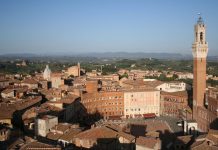The differences between the styles of “superdatch” and “Swiss box” are not absolute, which is proved by the works of Herzog and de Meiron or projects periodically carried out in collaboration with OM Rem Koolhaas. You can also point to other connections: Mike Iyer (Iigon/Goyer) worked with OMA, and the Swiss EM2N demonstrates a strong connection with the traditions of “superdatch”.
In the 1990s and in other European countries, some architects adhered to conceptual approaches reminiscent of the “superdatch” model, although it did not in all cases serve as a direct source of their ideas for them. This conceptual program influenced the activities of the Polish company KWK Promes, Studio non-stop in Bosnia and Herzegovina, a number of architects from Estonia and Croatia, Danish Plot (in 2006 it was divided into JDS and BIG) and Sebra, Mansili-Tunon in Spain, French firms Peripheral andLakaton and Vassal”.
Similarly, the minimalism of forms associated with Switzerland has found a response in other European countries in the works of architects such as Tony Fretton, David Chipperfield, Caruso St. John and John Pawson in Britain; Robbrechg and Dai, De Smert Vermelen, AWG and “Office Kersten Geere David Van Severen” in Belgium; “Baumschlager Eberle” in Austria; Carlos Ferrater, Abalos and Herreros in Spain; Eduardo Souta de Moura in Portugal; Klaus en Kaan, Jacob De Brauer in the Netherlands; “Hild and K” in Germany. There was a wide range of ideas behind the simple forms they developed.
Sometimes minimalism arises as a result of the process of abstraction, when the form is developed “out of nothing”; in other cases, it is due to cutting off excess from something originally given. It often happens that the purpose of such a clipping is to give space for everyday life. The architecture here is unusual in nature, but it does not seem to be something particularly exceptional if it is consistent with generally accepted ideas, when its forms are moderate enough not to contrast with the surrounding environment.
This is not the first time that architects are looking for the ordinary in the exceptional and exceptional qualities in the ordinary. This continuous thread stretches from the end of the nineteenth century, namely from the craving for the study of local folklore, to the traditionalism of the interwar years and the interest in everyday life that Alison and Peter Smithson and their entourage show. But now, more than ever before, the craving for the ordinary seems to be a reaction to the provocative emergence of a large number of unusual architecture.
These exceptional architectural projects are carried out in different European countries with varying intensity or frequency, but they are widely represented in many regions of the continent and in many cases largely determine the appearance of cities. Such architecture certainly shapes the character and identity of the societies that produce it. But equally, of course, in some regions, to a considerable extent, the reaction is subject to the law of weakening, and therefore its influence is reduced.



















